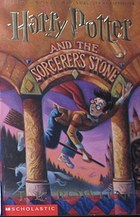I challenged my 8th Grade student to create a flow chart for A Midsummer Night’s Dream that captured the action and the ever-changing relationships of this play. As soon as I gave her this assignment her face lit up and she said she could already see how to do it. I want to share it with you, so you can delight in it as much as I have.
Category: Chart
Danger: Read Alouds at Risk!
 What a journey I’ve had with teaching reading! I started out with basal readers and felt guilty when I took time away from the basals to do class read-alouds. I progressed to teaching reading strategies using carefully planning units designed to teach, practice, and assess using the workshop method. I’m still there, but have taken a shaky step forward–designing the units, but feeling my way carefully and improvising as I respond to the needs of my class.
What a journey I’ve had with teaching reading! I started out with basal readers and felt guilty when I took time away from the basals to do class read-alouds. I progressed to teaching reading strategies using carefully planning units designed to teach, practice, and assess using the workshop method. I’m still there, but have taken a shaky step forward–designing the units, but feeling my way carefully and improvising as I respond to the needs of my class.
This happened recently as I realized that my ELL students were not engaged during read alouds. They behaved, but if you looked carefully their eyes were glazed over. Read alouds are such an important part of reading instruction–as a matter of fact, many of my mini-lessons take place in the context of read-alouds these days.
Benefits of using read alouds
One of the most important things adults can do in preparing children for success in school and in reading is to read aloud with them.
- Listeners build listening and comprehension skills through discussion during and after reading.
- Listeners increase their vocabulary foundation by hearing words in context.
- Listeners improve their memory and language skills as they hear a variety of writing styles and paraphrase their understanding.
- Listeners gain information about the world around them.
Listeners develop individual interests in a broad variety of subjects and they develop imagination and creativity: what better way to build skills which foster inquiry? Other suggestions and benefits are in this Education World article. (http://www.esiponline.org/classroom/foundations/reading/readalouds.html)
You can see why I would consider this a classroom emergency. So I decided to read Harry Potter. I needed a high interest book that was in their grasp. Step 1 in my emergency plan. It worked for the boys, but not for the girls.
So, Step 2 in my plan, constructed in the moment, was to make a character map for students to use to follow the story a bit better. Still no success with two of the girls. Two girls not learning is a major catastrophe for me and so I went for Step 3: the movie. I brought the movie in and we watched it up to the point in the movie where we had stopped reading. Fortunately, the movie is pretty true to the book. Constantly referring to the character chart as the movie played, the two girls finally had a mental picture (even if it was provided for them) of what was happening and could understand the book.
And so we continue. I read a few chapters and then we watch the movie. All of my students love it. All of my students are learning. And my ELL students are also engaged and working to follow the read alouds.
Did I clunk on a word?
![]() When using the Dr. Goodreader chart, we need to teach students that it’s not that good readers don’t make mistakes when they read, but that good readers notice when something doesn’t make sense and go back to correct their mistakes.
When using the Dr. Goodreader chart, we need to teach students that it’s not that good readers don’t make mistakes when they read, but that good readers notice when something doesn’t make sense and go back to correct their mistakes.
Even the best readers misread words from time to time. Our brains assume what the next word will be based on the first letter or two. When it doesn’t make sense we need to ask ourselves some questions:
- Did I read the word incorrectly? (I have ample opportunity to model this when I read out loud to my students.)
- Did I substitute a word? (This as far as most older intermediate readers need to go.)
- Can I try reading the word out loud? (This helps younger students and ELL students.)
- Have I looked carefully at the beginning and ending sounds? (Some students are in such a hurry that they skip over important parts of a word.)
- Do I need to point and slide? (Very helpful to younger readers.)
Does this make sense?
When you click on the Dr. Goodreader chart, you see that the first question readers need to ask themselves is, “Does this make sense?” 
Good readers subconsciously ask themselves this question as they read. Other readers need to learn to purposefully question themselves as they read…otherwise they’ll just read words and not enjoy or understand what they are reading. Yesterday I conferenced with Camila who was reading a “Clue” book. In the story, the characters were playing charades and acting out clues for one another. I asked her what one of the clues meant, and she turned pages back to show me Coronel Mustard with a candlestick. There was absolutely no connection between the two.
It turned out that since Camila didn’t know what charades was, she couldn’t figure out what was happening. Worse that that, she didn’t stop to ask herself if what she was reading made any sense. She kind of floated along on a cloud of words that had no substance.
Some students need their memory jogged, and I often have them put a sticky note in their book to remind themselves to ask the single most important question to reading comprehension. Some students need to start with every paragraph, others with every page, and some at the chapter level. If they are at the paragraph level, I try to work with them as often as possible to get them into the habit of asking, thinking about their thinking, and thoughtfully responding.
What are your ideas for having students think about their thinking while they read?
Become your own doctor
No, I don’t recommend this for your physical health (although I do admit to being a tad compulsive about researching meds and dia gnoses), but I definitely recommend it when it comes to your reading.
gnoses), but I definitely recommend it when it comes to your reading.
Dr. Goodreader can help you comprehend what you are reading–be it “Cat in the Hat” or quantum physics. Learn to diagnose your reading “clunks” and help students self-diagnose as well.
If you are a good reader, you are probably automatically doing these things, but some students must be explicitly taught each reading strategy and when to use it. It’s actually pretty easy. Just click on the Dr. Goodreader diagnosis chart, for a start. Dr_ Goodreader’s Diagnosis Chart
Photo credit: blogs.seattleweekly.com/…/stethoscope.jpg